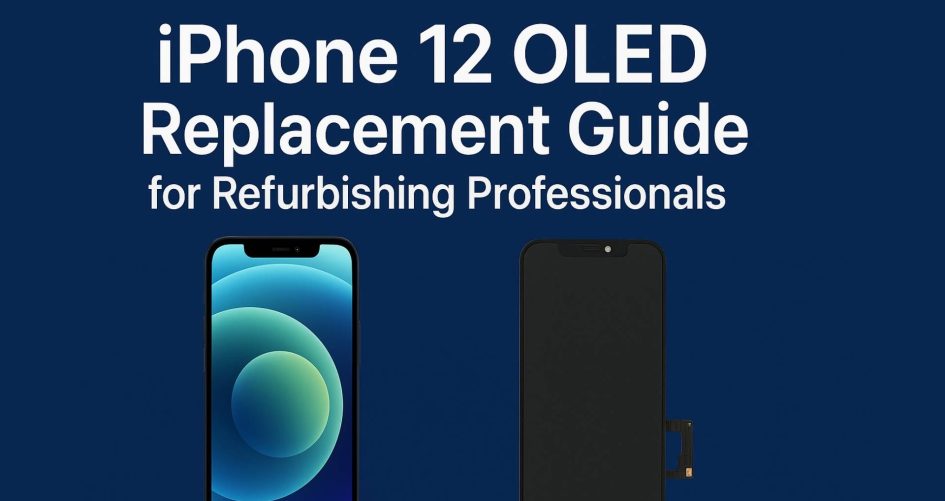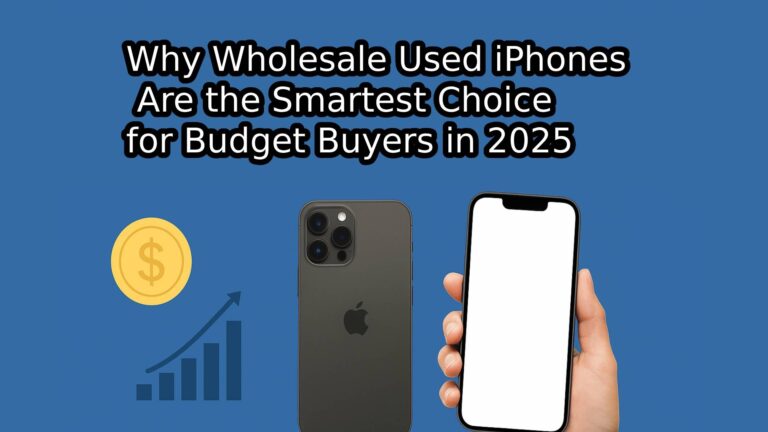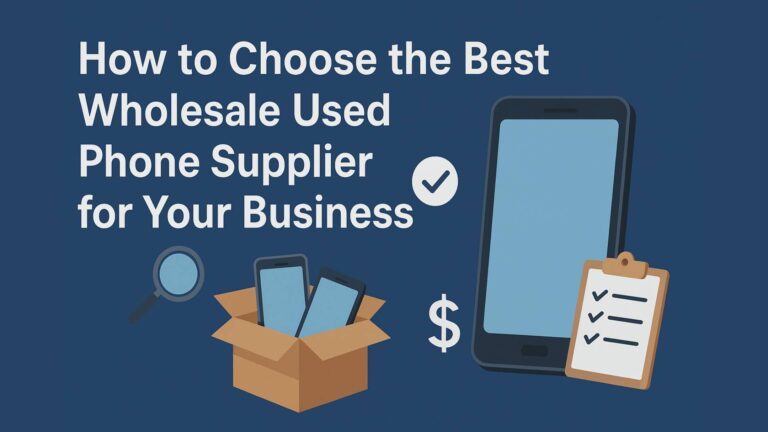If you’re in the refurbishing game, the iPhone 12 OLED screen is where precision meets profit. This detailed iPhone 12 refurb guide will walk professionals through safe removal, installation, and quality assurance when replacing this component. Using only premium screen parts is non‑negotiable for reliable resale and long-term customer trust.
Whether you’re running a full‑scale refurb lab or just leveling up your skills, this guide breaks down everything you need to know — from teardown tools to testing, calibration, and where to source high‑grade iPhone 12 OLED screen replacements. Know more.
1. Why the iPhone 12 OLED Screen Demands Attention
The iPhone 12 OLED screen represents a leap in display technology — vibrant color, high resolution, thin design. But it’s fragile. When refurbishing, one wrong move can result in damage to the flex cables, Face ID components, or True Tone calibration.
Professionals following a certified iPhone 12 refurb guide know that using premium screen parts — not cheap LCD alternatives — protects device integrity, resale value, and brand reputation.
2. Tools You’ll Need for a Safe iPhone 12 OLED Replacement
Before you start replacing the iPhone 12 OLED screen, assemble the following tools:
- Pentalobe and tri-point screwdrivers
- Plastic spudger set
- Suction handle
- Anti-static gloves
- Precision tweezers
- Heat pad or iOpener
- ESD-safe work mat
- Screen press clamp (optional but helpful)
Don’t skimp here. Investing in pro tools pays off — especially when handling premium screen parts on high‑value devices.
3. Step-by-Step: iPhone 12 OLED Screen Removal
Follow this iPhone 12 refurb guide for a clean teardown:
Step 1: Power Off the Device
Safety first — turn off the phone completely and remove the SIM tray.
Step 2: Heat the Edges
Use a heat pad at ~80°C for 2–3 minutes to loosen adhesive around the iPhone 12 OLED screen.
Step 3: Pry Open with Suction Tool + Spudger
Gently separate the screen from the chassis, starting from the bottom edge. Slide the spudger slowly to avoid damaging internal clips.
Step 4: Disconnect the Battery First
Always unplug the battery before any screen connector. This reduces risk of short circuits.
Step 5: Disconnect Display Flex Cables
There are three key cables linked to the iPhone 12 OLED screen — handle with extreme care.
4. Installation: Mounting Premium Screen Parts
With the damaged iPhone 12 OLED screen removed, it’s time to install your replacement. Choose only premium screen parts for:
- True color calibration
- Face ID retention
- Touch sensitivity
- Long-term durability
Avoid LCD conversions. They may be cheaper, but they reduce resale value and increase customer returns.
Step 1: Transfer Components
Move over the front sensor assembly (earpiece, proximity sensor, microphone) to the new iPhone 12 OLED screen.
Step 2: Clean and Inspect
Before installing, clean the internal frame. Inspect connectors for damage or debris.
Step 3: Connect Display Cables + Battery
Secure all flex cables back into the logic board. Connect the battery last.
Step 4: Boot Test
Power the device before sealing to ensure display, touch, Face ID, and True Tone work. If using original EEPROM data, restore True Tone via programmer.
Step 5: Seal and Clamp
Seal the screen using fresh adhesive. Clamp for 10 minutes to ensure pressure bonding.
5. Where to Source Premium Screen Parts
Not all screens are equal. The right supplier makes or breaks your reputation. Look for:
- A+ Grade iPhone 12 OLED screen options
- 12-month warranty on premium screen parts
- OEM spec color and brightness calibration
- EEPROM data pre-programmed or transferable
Sourcing premium screen parts locally (EU warehouse or verified refurb wholesaler) avoids long lead times and import issues.
6. Quality Control Checklist for Refurb Professionals
Before resale or assembly, every iPhone 12 OLED screen replacement must pass this checklist:
| Test | Pass Criteria |
| Touch response | No dead spots, full multi-touch support |
| Display color + brightness | Uniform, no tinting or ghosting |
| Face ID | Working and aligned correctly |
| Front mic + proximity sensor | Accurate and noise-free |
| True Tone | Restored via EEPROM (optional) |
| Physical fit | Flush with chassis, no gaps or lift |
Logging all of this in your refurb system or QC sheet makes warranty handling smooth and builds customer trust.
7. Troubleshooting Common Issues
Even pros run into problems. This iPhone 12 refurb guide covers quick fixes:
- No display but phone vibrates? Re-seat screen flex cables and check battery connection.
- Face ID not working? Front sensor assembly wasn’t transferred correctly. Use OEM part only.
- True Tone missing? EEPROM data wasn’t transferred. Requires programmer to clone data from original iPhone 12 OLED screen.
- Display flickering or touch lag? Cheap screen used — switch to premium screen parts with OLED driver chip.
8. Software Reset and True Tone Restoration
When replacing the iPhone 12 OLED screen, True Tone calibration data is lost unless cloned from the original screen EEPROM. Tools like JC V1S or QianLi iCopy Plus can:
- Read EEPROM from damaged screen
- Write to new premium screen parts
- Preserve True Tone and display tuning
True Tone matters to users — it’s a subtle feature, but skipping it lowers perceived quality.
9. Cost Breakdown and Resale ROI
Refurb professionals want numbers. Let’s break it down:
| Component/Service | Cost Estimate (EUR) |
| Premium iPhone 12 OLED screen | €40–€55 |
| Labor (30 min) | €15–€20 |
| Misc supplies (adhesive, tools) | €3–€5 |
| Total Refurb Cost | €60–€80 |
| Resale Value (Grade A) | €180–€220 |
| Gross Margin | ~€100–€140/device |
Multiply that across 50–100 units monthly and you’re talking serious revenue from proper iPhone 12 refurb guide application using premium screen parts.
10. How to Market Refurbished iPhone 12s with Replaced Screens
Don’t hide the fact that the screen was replaced — highlight that it’s a premium screen part replacement done to OEM standards. Consumers appreciate:
- Full-function Face ID
- True Tone calibration
- Warranty-backed screen repair
Use phrases like “professionally refurbished with premium screen parts” and “tested OLED display with 12-month warranty.”
11. Future-Proofing Your Workflow
As Apple introduces more complex parts integrations, repair professionals must stay updated. That includes:
- Mastering iPhone 12 refurb guide techniques
- Sourcing better iPhone 12 OLED screen modules
- Training on EEPROM writing and diagnostic tools
Invest now in screen calibration tools, heat stations, and parts sourcing networks. The higher your standard, the higher your resale value — and reputation.
12. Final Tips from the Field
- Always take photos before disassembly for reference
- Document serial numbers and part replacements
- Use static-free gloves to handle premium screen parts
- Keep a stockpile of tested, graded iPhone 12 OLED screen options
- Maintain a library of updated iPhone 12 refurb guide docs for your team
In Summary
Replacing an iPhone 12 OLED screen is one of the most high-impact services refurbishing pros offer — but only if done right. Following this iPhone 12 refurb guide, using top-quality tools, and installing premium screen parts will ensure every phone you refurbish meets or exceeds user expectations.
This isn’t just repair — it’s restoration. And when your refurb business consistently delivers Grade A results, buyers return and margins grow. Know more.





